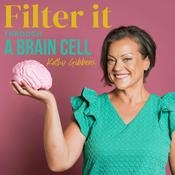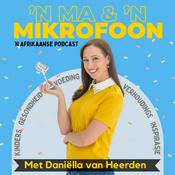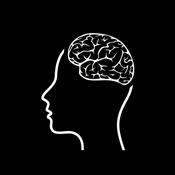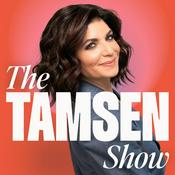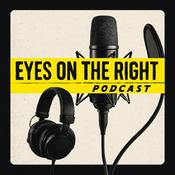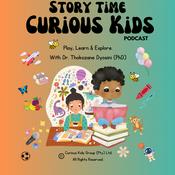141 episodes
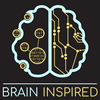
BI 228 Alex Maier: Laws of Consciousness
2025/12/31 | 1h 57 mins.
Support the show to get full episodes, full archive, and join the Discord community. The Transmitter is an online publication that aims to deliver useful information, insights and tools to build bridges across neuroscience and advance research. Visit thetransmitter.org to explore the latest neuroscience news and perspectives, written by journalists and scientists. Read more about our partnership. Sign up for Brain Inspired email alerts to be notified every time a new Brain Inspired episode is released. To explore more neuroscience news and perspectives, visit thetransmitter.org. Alex is an associate professor of psychology at Vanderbilt University where he heads the Maier Lab. His work in neuroscience spans vision, visual perception, and cognition, studying the neurophysiology of cortical columns, and other related topics. Today, he is here to discuss where his focus has shifted over the past few years, the neuroscience of consciousness. I should say shifted back, since that was his original love, which you'll hear about. I've known Alex since my own time at Vanderbilt, where I was a postdoc and he was a new faculty member, and I remember being impressed with him then. I was at a talk he gave - job talk or early talk - where it was immediately obvious how passionate and articulate he is about what he does, and I remember he even showed off some of his telescope photography - good pictures of the moon, I remember. Anyway, we always had fun interactions, even if sometimes it was a quick hello as he ran up stairs and down hallways to get wherever he was going, always in a hurry. Today we discuss why Alex sees integration information theory as the most viable current prospect for explaining consciousness. That is mainly because IIT has developed a formalized mathematical account that hopes to do for consciousness what other math has done for physics, that is, give us what we know as laws of nature. So basically our discussion revolves around everything related to that, like philosophy of science, distinguishing mathematics from "the mathematical", some of the tools he is finding valuable, like category theory, and some of his work measuring the level of consciousness IIT says a whole soccer team has, not just the individuals that comprise the team. Maier Lab Astonishing Hypothesis (Alex's youtube channel) Twitter: Sensation and Perception textbook (in-the-making) Related papers Linking the Structure of Neuronal Mechanisms to the Structure of Qualia Information integration and the latent consciousness of human groups Neural mechanisms of predictive processing: a collaborative community experiment through the OpenScope program Various things Alex mentioned: “An Antiphilosophy of Mathematics,” Peter J. Freyd youtube video about "the mathematical". David Kaiser's playlist on modern physics. 0:00 - Intro 4:27 - Discovering consciousness science 11:23 - Laws of perception 15:48 - Integrated information theory and mathematical formalism 23:54 - Theories of consciousness without math 28:18 - Computation metaphor 34:44 - Formalized mathematics is the way 36:56 - Category theory 41:42 - Structuralism 51:09 - The mathematical 54:33 - Metaphysics of the mathematical 59:52 - Yoneda Lemma 1:12:05 - What's real 1:26:22 - Measuring consciousness of a soccer team 1:35:03 - Assumptions and approximations of IIT 1:43:13 - Open science

BI 227 Decoding Memories: Aspirational Neuroscience 2025
2025/12/17 | 1h 15 mins.
Support the show to get full episodes, full archive, and join the Discord community. The Transmitter is an online publication that aims to deliver useful information, insights and tools to build bridges across neuroscience and advance research. Visit thetransmitter.org to explore the latest neuroscience news and perspectives, written by journalists and scientists. Read more about our partnership. Sign up for Brain Inspired email alerts to be notified every time a new Brain Inspired episode is released. To explore more neuroscience news and perspectives, visit thetransmitter.org. Can you look at all the synaptic connections of a brain, and tell me one nontrivial memory from the organism that has that brain? If so, you shall win the $100,000 prize from the Aspirational Neuroscience group. I was recently invited for the second time to chair a panel of experts to discuss that question and all the issues around that question - how to decode a non-trivial memory from a static map of synaptic connectivity. Before I play that recording, let me set the stage a bit more. Aspirational Neuroscience is a community of neuroscientists run by Kenneth Hayworth, with the goal, from their website, to "balance aspirational thinking with respect to the long-term implications of a successful neuroscience with practical realism about our current state of ignorance and knowledge." One of those aspirations is to decoding things - memories, learned behaviors, and so on - from static connectomes. They hold satellite events at the SfN conference, and invite experts in connectomics from academia and from industry to share their thoughts and progress that might advance that goal. In this panel discussion, we touch on multiple relevant topics. One question is what is the right experimental design or designs that would answer whether we are decoding memory - what is a benchmark in various model organisms, and for various theoretical frameworks? We discuss some of the obstacles in the way, both technologically and conceptually. Like the fact that proofreading connectome connections - manually verifying and editing them - is a giant bottleneck, or like the very definition of memory, what counts as a memory, let alone a "nontrivial" memory, and so on. And they take lots of questions from the audience as well. I apologize the audio is not crystal clear in this recording. I did my best to clean it up, and I take full blame for not setting up my audio recorder to capture the best sound. So, if you are a listener, I'd encourage you to check out the video version, which also has subtitles throughout for when the language isn't clear. Anyway, this is a fun and smart group of people, and I look forward to another one next year I hope. The last time I did this was episode 180, BI 180, which I link to in the show notes. Before that I had on Ken Hayworth, whom I mentioned runs Aspirational Neuroscience, and Randal Koene, who is on the panel this time. They were on to talk about the future possibility of uploading minds to computers based on connectomes. That was episode 103. Aspirational Neuroscience Panel Michał [email protected] Research scientist (connectomics) with Google Research, automated neural tracing expert Sven Dorkenwald @sdorkenw.bsky.social Research fellow at the Allen Institute, first-author on first full Drosophila connectome paper Helene [email protected] Group leader at Ernst Strungmann Institute, hippocampus connectome & EM expert Andrew Payne @andrewcpayne.bsky.social Founder of E11 Bio, expansion microscopy & viral tracing expert Randal Koene Founder of the Carboncopies Foundation, computational neuroscientist dedicated to the problem of brain emulation. Related episodes: BI 103 Randal Koene and Ken Hayworth: The Road to Mind Uploading BI 180 Panel Discussion: Long-term Memory Encoding and Connectome Decoding

BI 226 Tatiana Engel: The High and Low Dimensional Brain
2025/12/03 | 1h 36 mins.
Support the show to get full episodes, full archive, and join the Discord community. The Transmitter is an online publication that aims to deliver useful information, insights and tools to build bridges across neuroscience and advance research. Visit thetransmitter.org to explore the latest neuroscience news and perspectives, written by journalists and scientists. Read more about our partnership. Sign up for Brain Inspired email alerts to be notified every time a new Brain Inspired episode is released. To explore more neuroscience news and perspectives, visit thetransmitter.org. Tatiana Engel runs the Engel lab at Princeton University in the Princeton Neuroscience Institute. She's also part of the International Brain Laboratory, a massive across-lab, across-world, collaboration which you'll hear more about. My main impetus for inviting Tatiana was to talk about two projects she's been working on. One of those is connecting the functional dynamics of cognition with the connectivity of the underlying neural networks on which those dynamics unfold. We know the brain is high-dimensional - it has lots of interacting connections, we know the activity of those networks can often be described by lower-dimensional entities called manifolds, and Tatiana and her lab work to connect those two processes with something they call latent circuits. So you'll hear about that, you'll also hear about how the timescales of neurons across the brain are different but the same, why this is cool and surprising, and we discuss many topics around those main topics. Engel Lab. @engeltatiana.bsky.social. International Brain Laboratory. Related papers: Latent circuit inference from heterogeneous neural responses during cognitive tasks The dynamics and geometry of choice in the premotor cortex. A unifying perspective on neural manifolds and circuits for cognition Brain-wide organization of intrinsic timescales at single-neuron resolution Single-unit activations confer inductive biases for emergent circuit solutions to cognitive tasks. 0:00 - Intro 3:03 - No central executive 5:01 - International brain lab 15:57 - Tatiana's background 24:49 - Dynamical systems 17:48 - Manifolds 33:10 - Latent task circuits 47:01 - Mixed selectivity 1:00:21 - Internal and external dynamics 1:03:47 - Modern vs classical modeling 1:14:30 - Intrinsic timescales 1:26:05 - Single trial dynamics 1:29:59 - Future of manifolds

BI 225 Henk De Regt: Understanding in Machines and Humans
2025/11/19 | 1h 43 mins.
Support the show to get full episodes, full archive, and join the Discord community. The Transmitter is an online publication that aims to deliver useful information, insights and tools to build bridges across neuroscience and advance research. Visit thetransmitter.org to explore the latest neuroscience news and perspectives, written by journalists and scientists. Read more about our partnership. Sign up for Brain Inspired email alerts to be notified every time a new Brain Inspired episode is released. To explore more neuroscience news and perspectives, visit thetransmitter.org. Henk de Regt is a professor of Philosophy of Science and the director of the Institute for Science in Society at Radboud University. Henk wrote the book on Understanding. Literally, he wrote what has become a classic in philosophy of science, Understanding Scientific Understanding. Henks' account of understanding goes roughly like this, but you can learn more in his book and other writings. To claim you understand something in science requires that you can produce a theory-based explanation of whatever you claim to understand, and it depends on you having the right scientific skills to be able to work productively with that theory - for example, making qualitative predictions about it without performing calculations. So understanding is contextual and depends on the skills of the understander. There's more nuance to it, so like I said you should read the book, but this account of understanding distinguishes it from explanation itself, and distinguishes it from other accounts of understanding, which take understanding to be either a personal subjective sense - that feeling of something clicking in your mind - or simply the addition of more facts about something. In this conversation, we revisit Henk's work on understanding, and how it touches on many other topics, like realism, the use of metaphors, how public understanding differs from expert understanding, idealization and abstraction in science, and so on. And, because Henk's kind of understanding doesn't depend on subjective awareness or things being true, he and his cohorts have begun working on whether there could be a benchmark for degrees of understanding, to possibly asses whether AI demonstrates understanding, and to use as a common benchmark for humans and machines. Google Scholar page Social: @henkderegt.bsky.social; Book: Understanding Scientific Understanding. Related papers Towards a benchmark for scientific understanding in humans and machines Metaphors as tools for understanding in science communication among experts and to the public Two scientific perspectives on nerve signal propagation: how incompatible approaches jointly promote progress in explanatory understanding 0:00 - Intro 10:13 - Philosophy of explanation vs understanding 14:32 - Different accounts of understanding 20:29 - Henk's account of understanding 26:47 - What counts as intelligible? 34:09 - Hodgkin and Huxley alternative 37:54 - Familiarity vs understanding 44:42 - Measuring understanding 1:02:53 - Machine understanding 1:16:39 - Non-factive understanding 1:23:34 - Abstraction vs understanding 1:31:07 - Public understanding of science 1:41:35 - Reflections on the book

BI 224 Dan Nicholson: Schrödinger’s What is Life? Revisited
2025/11/05 | 1h 49 mins.
Support the show to get full episodes, full archive, and join the Discord community. The Transmitter is an online publication that aims to deliver useful information, insights and tools to build bridges across neuroscience and advance research. Visit thetransmitter.org to explore the latest neuroscience news and perspectives, written by journalists and scientists. Read more about our partnership. Sign up for Brain Inspired email alerts to be notified every time a new Brain Inspired episode is released. To explore more neuroscience news and perspectives, visit thetransmitter.org. My guest today is Dan Nicholson, Assistant Professor of Philosophy at George Mason University, here to talk about his little book, What Is Life? Revisited. Erwin Schrödinger's What Is Life is a famous book that people point to as having predicted DNA and influenced and inspired many well-known biologists ushering in the molecular biology revolution. But Schrödinger was a physicist, not a biologist, and he spent very little time and effort toward understanding biology. What was he up to, why did he write this "famous little book"? Schrödinger had an agenda, a physics agenda. He wanted to save the older deterministic version of quantum physics from the new indeterministic version. When Dan was on the podcast a few years ago, we talked about the machine view of biological systems, how everything has become a "mechanism", and how that view fails to capture what modern science is actually telling us, that organisms are unlike machines in important ways. That work of Dan's led him down this path to Schrödinger's What Is Life, which he argues was a major contributor to that machine metaphor so ubiquitous today in biology. One of the reasons I'm interested in this kind of work is because the cognitive sciences, including neuroscience and artificial intelligence, inherited this mechanistic perspective, and swallowed it so hard that if you don't include the word "mechanism" in your research paper, you're vastly decreasing your chances of getting your work published, when in fact the mechanistic perspective is one super useful perspective among many. Dan’s website. Google Scholar. Social: @NicholsonHPBio; @djnicholson.bsky.social What Is Life? Revisited Previous episode: BI 150 Dan Nicholson: Machines, Organisms, Processes Read the transcript. 0:00 - Intro 7:27 - Why Schrodinger wrote What is Life 15:13 - Aperiodic crystal and the meaning of code 21:39 - Order-from-order, order-from-disorder 28:32 - Appeal to authority 37:48 - Cell as machine 39:33 - Relation between DNA and organism (development) 44:44 - Negentropy 53:54 - Original contributions 58:54 - Mechanistic metaphor in neuroscience 1:16:05 - What's the lesson? 1:28:06 - Historical sleuthing 1:39:49 - Modern philosophy of biology
More Education podcasts
Trending Education podcasts
About Brain Inspired
Listen to Brain Inspired, After School Is After School With Sis G.U and many other podcasts from around the world with the radio.net app

Get the free radio.net app
- Stations and podcasts to bookmark
- Stream via Wi-Fi or Bluetooth
- Supports Carplay & Android Auto
- Many other app features
Get the free radio.net app
- Stations and podcasts to bookmark
- Stream via Wi-Fi or Bluetooth
- Supports Carplay & Android Auto
- Many other app features


Brain Inspired
download the app,
start listening.










